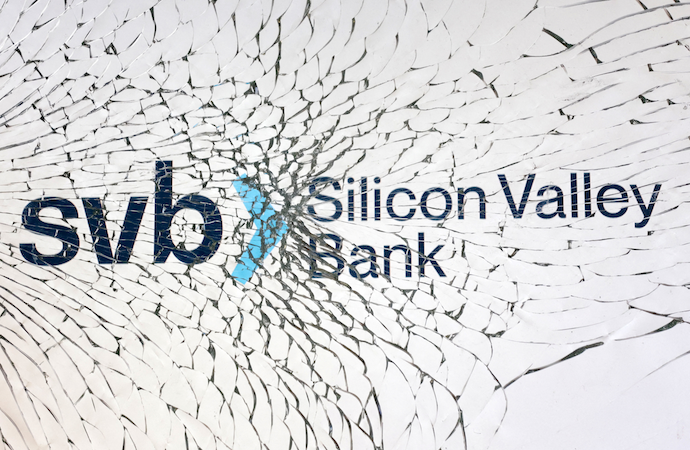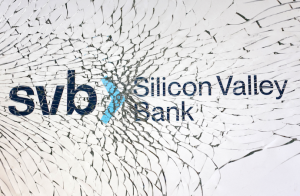Join Our Telegram channel to stay up to date on breaking news coverage
In an interview with Fortune Magazine, short seller Dale Wettlaufer walked through Silicon Valley Bank’s financials and outlining key data he’s been closely monitoring for months less than an hour before the California financial regulator shut Silicon Valley Bank’s doors on Friday.
Wettlaufer, a partner at the short-selling firm Bleecker Street Research, which launched its short position into SVB in January, added, “I’ve never seen a scenario like this move so quickly.”
Wettlaufer was not referring to the recent two and a half days, when a bank run forced the California Financial Regulation Commission into the SVB’s offices to shut it down just hours after the company announced it was raising more than $2 billion in capital through a share sale. Actually, Wettlaufer was talking about the previous two years.
The venture market reached new heights in 2021, and Silicon Valley Bank was soaring. A significant lender to venture capital and private equity funds as well as a wealth manager for wealthy entrepreneurs, the bank had long had a central position in the private markets as a lender and banker to around half of the startup companies in the sector. The bank invests directly in startups as well as through its fund of funds, which includes companies like Sequoia Capital and Accel. The bank has a significant impact on all areas of the private markets.
During the early stages of the COVID pandemic, low interest rates helped startups raise record amounts of money as VCs raised large multi-billion dollar sums and startups raked in billions from investors. It was all good news for Silicon Valley Bank because many of those firms would deposit their freshly acquired funding there and then withdraw from it as needed. While they awaited the limited partner dollars to arrive at the bank, venture funds would borrow money from SVB. SVB was doing well as part of those funds were needed by Silicon Valley Bank to park money as collateral for those loans.
The bank’s non-interest-bearing deposits skyrocketed to $126 billion in 2021, more than double the $67 billion the bank had in the previous year.
How should we spend all of the fresh money on the balance sheet?
When Wettlaufer guides me through his own models, he says,
In 2022, the liability composition changed so dramatically and so quickly.
With the bank holding so much cash at the height of the venture boom, Wettlaufer says that its long-term securities portfolio increased from $17 billion to $98 billion. During the peak of the market, SVB invested that money.
Since interest rates aren’t zero anymore and the long-term securities portfolio is around $15 billion in the red, according to Wettlaufer, SVB may have had to acknowledge up to $15 billion in unrealized losses if it wished to exchange bonds within the long-term portfolio to raise capital.
However, Silicon Valley Bank’s own interest costs would soar to absurd levels as a result of the Fed hikes, which forced SVB to increase the interest rate it was paying to customers, as well as the fact that venture funding slowed down in 2022. This was another effect of the newly discovered high interest rates of 2022. The bank’s non-interest bearing deposit inflows fell below its non-interest bearing deposit withdrawals as a result of the slowdown. That was due to the fact that startups and other clients were losing money.
As a result, the SVB deposits’ makeup substantially altered. Noninterest-bearing deposits decreased by $45 billion in 2022, prompting the bank to replace them with liabilities that were more expensive than those that had previously funded it. SVB paid $62 million in interest on its deposits as of December 2021. Dec. 2022 would see $862 million. According to Wettlaufer’s forecast, it will reach close to $4 billion by the end of this year.
The level of non-interest-bearing deposits was plainly declining when Silicon Valley Bank published its annual report at the end of last month. And it appeared that those numbers would continue to drop. Wettlaufer predicted that non-interest-bearing deposits may drop from $80 billion to $40 billion, thus SVB would have needed to find $32 billion somewhere to make up the difference.
Wettlaufer remarks,
It’s crazy. I’ve never seen anything like this. The bank may have had to resort to personnel reductions, the sale of anything it could, or other measures to boost the numbers.
The Bank Run
That was all before the hysteria started. The company disclosed a $1.8 billion loss on the sale of its entire portfolio of liquid securities on Wednesday and stated that it was attempting to sell shares to raise more than $2 billion in capital. The bank also disclosed some updated forecasts, including a drop in net interest income from its 2022 prediction of about 30%. Venture capitalists warned their portfolio businesses to withdraw money on Thursday, which caused founders to panic and resulted in a traditional bank run. California regulators closed Silicon Valley Bank at midday on Friday, and the FDIC was named receiver.
Wettlaufer claims, “I’ve never seen a financial sheet fall this quickly.”
Naturally, Bleecker Street Research has benefited handsomely from the failure of Silicon Valley Bank (the team won’t disclose how much they profited from their short bet).
Yet, to describe Wettlaufer and Chris Drose, the creator of the short-selling fund, as “enthusiastic” would be inaccurate. The whole startup environment was paralyzed when Silicon Valley Bank failed in just three days, and it remains to be seen how widespread the panic will be and how many businesses and finances it will affect.
Drose, who called me shortly after the California regulators had closed the bank, advises that you should never short something with the intention of seeing it go into receivership.
Silicon Valley Bank was a real corporation that got itself into trouble, he adds, whereas he doesn’t think twice about a company he’s shorted that has engaged in fraud or where stakeholders have abused people. This is unique.
He says,
This is a diffused event… I have no idea what occurs. I have no idea how it will all turn out or, in the end, where that money ended up or went.
Those who felt their money was safe when they deposited it in a bank have already been left holding the bag.
That certainly isn’t something to be happy about, adds Drose.
As a result of Circle disclosing its exposure to Silicon Valley Bank, USDC Stablecoin drops to as low as 87 cents
According to data on CoinMarketCap and CoinGecko, US Dollar Coin, the No. 2 stablecoin by market cap, which is intended to always be priced at $1, is currently trading at 91 cents.
Overnight, it dropped to 87 cents, below the previous record low of 89 cents set in May 2019. It started to recover on Saturday morning.
The depegging took place when Circle, the company that issued USDC, reported on Friday night that Silicon Valley Bank still possessed some of the cash reserves that support USDC valued about $3.3 billion.
Even before that information was revealed, prominent cryptocurrency exchanges Binance and Coinbase acted, declaring they would temporarily halt USDC conversions in the midst of the uproar. Customers who hold USDC on those exchanges are therefore unable to withdraw it or convert it to another currency and are anxiously awaiting word from Circle or the USDC regaining its peg.
1/ Following the confirmation at the end of today that the wires initiated on Thursday to remove balances were not yet processed, $3.3 billion of the ~$40 billion of USDC reserves remain at SVB.
— Circle (@circle) March 11, 2023
Due to USDC’s depegging, prominent dollar-pegged stablecoins DAI (from Maker), USDD (from Tron), and USDP have also depegged (from Paxos). As of Saturday morning, DAI is trading at 93 cents, USDD is at 95 cents, and USDP is at 96 cents.
Stablecoins that are pegged to the US dollar are intended to maintain a consistent price of $1. Developed by Centre, a partnership between Circle and Coinbase, USDC is “always redeemable 1:1 for U.S. dollars,” according to a USDC explanatory page on Circle’s website.
Before it isn’t.
A stablecoin’s peg is not truly determined by the price on an exchange.
It is determined by the ability to redeem directly from the issuer 1 for 1.
That will be the question this week. Can people redeem directly from Circle?
— The Wolf Of All Streets (@scottmelker) March 11, 2023
Of course, Circle is far from the only cryptocurrency business that has been hit by the unexpected failure of Silicon Valley Bank.
A number of additional businesses and initiatives, including BlockFi, Circle, Avalanche, Proof, and Yuga Labs, disclosed their exposure to SVB on Friday. Yet among those companies, Circle is in a special position because it is in charge of maintaining trust in a product that is advertised as always being completely backed by cash on hand and always redeemable for $1.
Related
- Stablecoin Tether Price Explained
- Silicon Valley Bank shares crash by 60% one day after crypto bank Silvergate shut down
- Circle releases documents on USDC reserves
Join Our Telegram channel to stay up to date on breaking news coverage


